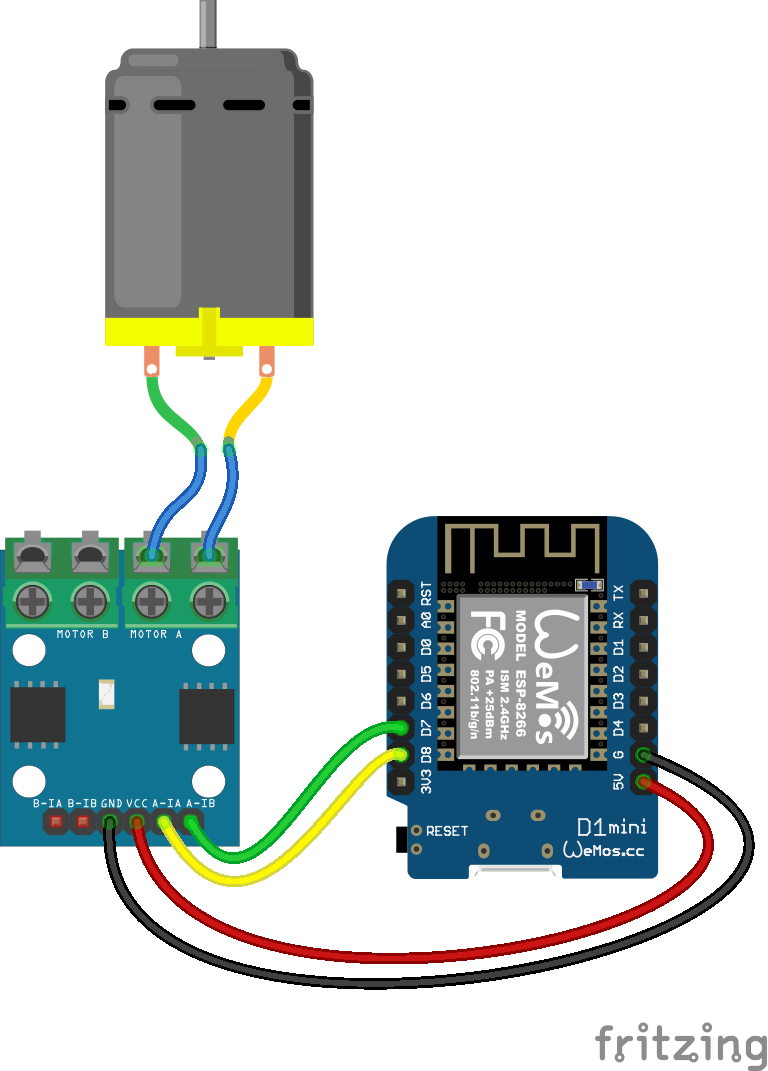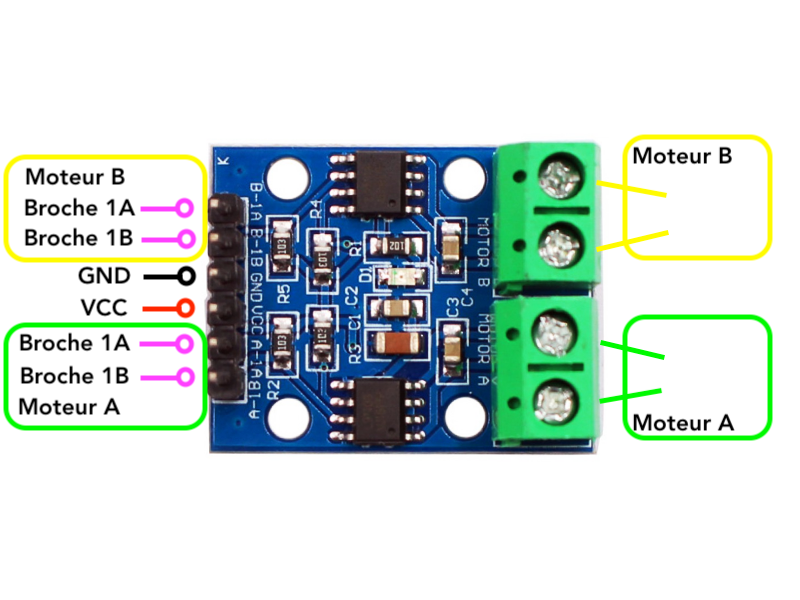Controleur de moteur L9110 (pont en h)
Le controleur de moteur L9110 est un composant, à bas coût, qui permet de controleur des moteurs avec un microcontroleur
Description longue
Il permet de controler jusqu'à 2 moteurs.
Tension de service : DC 2.5V – 12V
Courant de sortie maximum : 800 mA (continu) / canal
On peut utiliser l’alimentation 5V de l’Arduino ou 3V d'un D1 mini ou d'un esp32.
Pour controler un moteur il faut envoyer des instructions aux broche 1A et 1B :
Pour arrêter le moteur :
- 1 A = LOW
- 1B = LOW
Pour tourner dans un sens :
- 1A = LOW
- 1B = HIGH
Pour changer de sens, on inverse :
- 1A = HIGH
- 1B = LOW
Pour controler la vitesse il faut envoyer un signal PWM (analogWrite) sur la broche HIGH.
Le code minimal :
| BME280 | ||
| Avant le Setup | pas de bibliothèque | |
| Variable pour un moteur | #define moteurA_1A 15
#define moteurA_2A 13 int vitesse = 128; // 0 à 255 | |
| Dans le Setup | configuration des broches | pinMode(moteurA_1, OUTPUT);
pinMode(moteurA_2, OUTPUT); |
| Dans le Loop | Utilisation | digitalWrite(moteurA_1, LOW);
analogWrite(moteurA_2, vitesse); |
Montage
Exemple :
//////////////////////////
// Contrôleur de moteur //
// L9110 //
// pont en H //
//////////////////////////
/*
_________________
/ D1 mini \
|[ ]RST TX[ ]|
|[ ]A0 -GPIO RX[ ]|
|[ ]D0-16 5-D1[ ]|
|[ ]D5-14 4-D2[ ]|
|[ ]D6-12 0-D3[ ]|
A-1B - |[ ]D7-13 2-D4[ ]| LED_BUILTIN
A_1A - |[ ]D8-15 GND[ ]|
|[ ]3V3 . 5V[ ]|
| +---+ |
|_______|USB|_______|
*/
#define moteurA_1A 15
#define moteurA_1B 13
int vitesse = 128; // 0 à 255
void setup() {
// Configuration des ports en mode "sortie"
pinMode(moteurA_1A, OUTPUT);
pinMode(moteurA_1B, OUTPUT);
}
void loop() {
digitalWrite(moteurA_1A, LOW);
analogWrite(moteurA_1B, vitesse);
delay(1000);
analogWrite(moteurA_1A, vitesse);
digitalWrite(moteurA_1B, LOW);
delay(1000);
digitalWrite(moteurA_1A, LOW);
digitalWrite(moteurA_1B, LOW);
delay(1000);
}
Pages liées
Published


